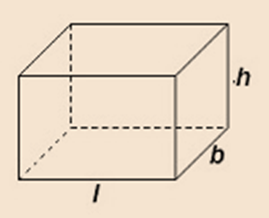- Books Name
- Class 6 Mathematics Book
- Publication
- ReginaTagebücher
- Course
- CBSE Class 6
- Subject
- Mathmatics
Expressions and Equations
Expressions using variables
Terms of an Expression
Parts of an expression that are formed independently first and again added or deducted are known as terms.
In the above- given instance, terms 2x and 5 are added to form the expression (2x+5).
Factors of a term
Parts of an expression that are formed independently first and also added or deducted are known as terms.
Factors of a term are amounts that cannot be further factorised.
In the above- given instance, factors of the term 2 x are 2 and x.
Coefficient of a term
The numerical factor of a term is called the measure of the term.
In the above- given illustration, 2 is the coefficient of the term 2x.
Like and Unlike Terms
Like terms
Illustration 8xy and 3xy are like terms.
Unlike terms
Terms having different variables are called, unlike terms.
Illustration 7xy and-3 x are unlike terms.
Formation of an expression
Formation of Algebraic Expressions
Combinations of variables, constants, and operators constitute an algebraic expression.
Illustration 2x+ 3, 3y +4xy, etc.
Addition and Deduction of Algebraic Expressions
Addition and Deduction of like terms
Sum of two or more like terms is a like term.
Its numerical measure will be equal to the sum of the numerical coefficients of all the like terms.
Example 8y + 7y =?
8y + 7y
(8 +7) y = 15y
Difference between two like terms is a like term.
Its numerical measure will be equal to the difference between the numerical coefficients of the two like terms.
Illustration 11z − 8z =?
11z
− 8z
(1- 8) z = 3z
Addition and Deduction of unlike terms
For adding or deducting two or more algebraic expressions, as if terms of both the expressions are grouped together and unlike terms are retained as it is.
Addition of − 5x2 +12xy and 7x2 + xy +7x is shown below
− 5x2 + 12xy
7x2 + xy +7x
2x2 +13xy+ 7x
Deduction of − 5x2 12xy and 7x2 xy 7x is shown below
− 5x2 +12xy
− 7x2 +xy +7x
12 x 2 11xy − 7x
Expressions written in situations
Using Expressions Practically
The use of expressions comes handy in everyday. For e.g. if we know that the price of one kg onion is Rs.5 less than the price of 1kg potato, then we can use expressions to calculate the price of 1kg onion. Let the price of 1kg potato be x. Then the price of 1kg onion if Rs. (x-5).
Similarly, 1. If Seema is 5 years older than Ritu and the age of Ritu is given to be z years. Then Seema’s age is (z + 5) years.
Examples:
Problem: Answer the following:
Take Sarita’s present age to be y.

What will be her age 5 years from now?
Her age 5 years from now will be = (y +5) years.
What was her age 3 years back?
Her age 3 years back was = (y – 3) years.
Sarita’s grandfather is six times her age. What is the age of her grandfather?

Age of Sarita’s grandfather = (6*y) years
3. Grandmother is 2 years younger than grandfather is. What is grandmother's age?

Age of Sarita’s grandmother = (Age of grandfather – 2) years
= (6*y -2) years
4. Sarita’s father’s age is 5 years more than 3 times Sarita’s age. What is?
Her father's age

Age of Sarita’s father = (3y + 5) years.
5. A rectangular box has height h its length is 5 times the height and breadth is 10 cm less than the length. Express the length and the breadth of the box in terms of the height.

Height of rectangular box = h cm. (given)
Length of rectangular box = 5*h cm
Breadth of rectangular box = (Length – 10) cm
= (5*h -10) cm.
6. A bus travels at v km per hour. It is going from Dasburg to Beespur. After the bus has travelled 5 hours, Beespur is still 20 km away. What is the distance from Dasburg to Beespur? Express it using v.

Speed of the bus = v km per hour
Distance travelled in 5 hours = Speed*Time
= Speed (km per hour)* 5 hours
= 5v kms
Distance from Dasburg to Beespur =Distance travelled in 5 hours + 20km
= (5v + 20) kms
What is an equation?
An equation is a condition on a variable, which is satisfied only for a definite value of the variable.
An equality sign separates the left- hand side (LHS) and right- hand side (RHS) of an equation. Hence LHS = RHS.
However, again, it is not an equation; If LHS is not equal to RHS.
Working an Equation
Value of a variable in an equation, which satisfies the equation, is called its result.
Solution to equations
One of the simplest methods of finding the solution of an equation is the trial and error method.

 Param Publication
Param Publication
 ReginaTagebücher
ReginaTagebücher
